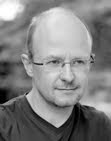Postface to Paradiso
These photographs were shot in Havana and in Mexico City between 2001 and 2002. They talk about that period, and about the urgency to work free of constraint, without having to rationalize or to explain what I was doing and why – to myself or anyone else.
It was an urgency, precisely that, a necessity which could not be delayed. I won’t talk about the significance of attributing the results to the urgency, primarily because I’m not the one who has to interpret or give a name to what I am doing, but also because I can’t find the right words to answer certain questions. Ultimately, everyone will find their own words and interpretations – ones which, hopefully, will always be different for each person.
I definitely wanted to do colour photographs, in which the colours were the active part, had a strong emotional impact, and didn’t bring to the image either a realistic and/or a decorative element. As frequently happens, I chose surroundings in which I could work arbitrarily and intuitively.
I need to return to the matter of urgency, because for me it is the only essential aspect of photography, absolutely central, and because it is the ever changing direction that leads our nervous tension towards the truth – a big word but I believe the only possible one to refer to all these things.
I don’t believe in talent alone, I absolutely don’t believe in style and I don’t believe in photography itself. It is purely circumstance that led me to photography: to come to terms with myself, to see myself reflected in others and others in me, to create relationships with everything. I would like to think, though, if my life had taken another path, that whatever I did would have done with the very same dedication, joy and suffering with which I photograph.
“He who lives worries about living truthfully and not whether his life is the same as his neighbour’s, he lives alone really and is convinced that a sincere life is, however individual, in its essence, completely unrepeatable.” (The Royal Doors, Pavel Florenskij).
Life is much more interesting than art, or they are the same thing. And so, when I say that I don’t believe in photography it is because it is only an instrument, a passion with wich to confront something much more intense and absolute.
The same is true of style. I can do colour photography, tomorrow black and white, I can use different formats, and conmpletely change the subject matter or language. The only thing which counts is the energy that unleashes what we do, the shape that we give it is a robe that we put on each time, depending on mood.
I also think that it is very risky to identify oneself or to feel completely at ease in an appearance. Beyond all of this there is the sensation of defeat which is always present. Being able to publish”Paradiso” is above all a huge liberation. It allows me to put behind me something that was important, and move on to something else in a definitive way.
Running after this imaginary truth, not exactly knowing what it is about, and knowing even less about how to arrive at it, is a race without end – at times discomforting, at others exalting – but one nevers turns back from it. The march is interminable, always looking ahead to accomplish what hasn’t aldready been done, and to do it better – with the knowledge that it will, however, always be defective, imperfect, incomplete – just as we are.
An inevitable failure.
As Alberto Giacometti wrote. I do what I do “to bit at reality, to defend myself, to feed myself, to grow, grow to better defend myself,to better attack, to better conquer, to move forward as best possible on all levels, in all directions, to defind myself against hunger, against the cold, against death, to be as free as possible; the most free that I can be to attempt – with my own means – to see better, to better understand everything around me; to understand better in order to be more free, to be the strongest possible, to dedicate, to dedicate to myself as much as possible to what I do, to run my adventure, to discover new worlds, to fight my war – for the pleasure? For the joy? of the war – for the pleasure to win and to lose.”
To add anything else would be difficult.
Lorenzo Castore













